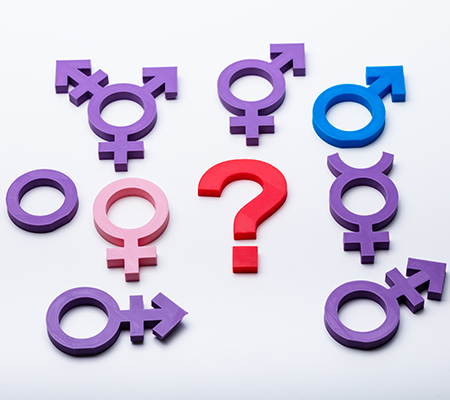
Gender dysphoria is a newer term in mainstream popular culture, but it actually first appeared in psychiatry literature as early as the 1970s and 1980s.
Defining gender dysphoria
Gender dysphoria is defined by the Diagnostic and Statistical Manual of Mental Disorders as the distress that stems from a person’s gender identity not matching their sex assigned at birth. Second, there is impairment in peer and/or family relationships, school performance and other aspects of their life as a consequence of the incongruence between their assigned sex and gender identity.
Dr. Jacqueline Velasco, pediatric endocrinologist at Marshfield Clinic Health System, said the key in diagnosing gender dysphoria is, “the gender identity should be consistent, insistent and persistent.”
An unknown cause
“The cause of gender dysphoria is unknown and likely multifactorial. Individuals with gender dysphoria have a hypothalamic response more like that of their experienced gender, rather than their genetic sex, pointing to a possible biological and genetic cause,” Velasco said.
According to Velasco, there are some persistent myths that surround the idea of gender dysphoria. Two of the most common misconceptions people have are that gender dysphoria is a phase and will go away, and that gender dysphoria is due to peer pressure or social influence.
Velasco said gender dysphoria generally tends to heighten in intensity as a person enters puberty, presenting more commonly around 13 to 16 years of age. Children who later will identify as transgender may sense that they feel different than others as early as age 8. Typically the more dramatic aspects of transitioning to a new gender are not recommended until the child is an older teen.
The transition process
“Starting gender affirming hormone therapy in adolescents with gender dysphoria is individualized, however, guidelines recommend starting at 16 years of age. Hormone therapy is considered partially irreversible, thus the adolescent should be able to understand the benefits and risks and give assent to hormone therapy. Gender affirming surgeries are offered at 18 years and older. Most plastic surgeons will require a year on hormone therapy prior to proceeding to surgeries,” Velasco said.
At Marshfield Clinic Health System, the transgender health clinic provides comprehensive care and support for transgender and gender diverse children and adolescents by offering health evaluation, wellness and routine care, hormone therapy, mental health support and community resources and support groups. We also offer gender affirming surgery to individuals older than 18.
If you would like to learn more, Velasco recommends the following resources:
- https://www.hrc.org/resources/transgender-children-and-youth-understanding-the-basics
- https://www.dhs.wisconsin.gov/lgbthealth/transgender.htm
- https://www.genderspectrum.org/


What is my first step and who do I contact first if I am currently a 23 year old male and feeling transgender and wanting to start to look at transitioning?
Hello Hunter,
Thank you for reaching out. We contact an expert of ours regarding your question and here is what she had to say:
'Patients can self-refer to the gender dysphoria clinic or they can have a member of their care team (internal or external) place a referral to the clinic. The contact number for me is 715-387-5744 on Monday, Wednesday, and Fridays. I will complete an intake with the patient to determine what further resources are needed and what areas of care are needed. From there I will reach out to appropriate departments to get appointments for the patient. I can also email the patient further resources as needed.'
Hope this helps,
Jake